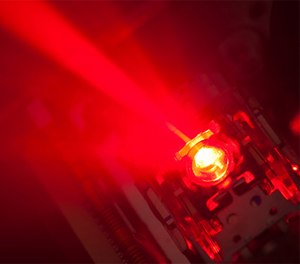
As spectrometers are included in FEMA's Authorized Equipment List, agencies can purchase the devices with grant funding
Science and technology play a major role in the current criminal justice system. From crime scene to investigation to trial, police departments use an array of technology-based scientific processes for evidence collection and handling.
Today’s juries, brought up on a TV diet of “CSI: Crime Scene Investigation” and “Law & Order,” expect to see detailed forensic evidence presented during a trial. While forensic technologies have traditionally been expensive and something few law enforcement agencies could include in annual budgets, the good news is that access to forensic tools such as spectrometry technology is improving.
On a daily basis, police agencies encounter unknown substances that require quick and accurate identification. Current identification methods – such as color change field testing kits – require using a portion of the seized substance, which can be problematic when only small samples are available.
Raman spectroscopy – which provides rapid, sensitive, nondestructive analysis of a variety of drug types – can provide accurate identification for a range of unknown substances. A growing number of criminal justice and law enforcement agencies are recognizing the benefits of this technology.
Raman spectroscopy units use a laser to “see” through any evidence containers to analyze liquids, gels or powders. The testing process also helps limit officer exposure to unknown substances. This is especially important as accidental exposure to fentanyl and other opioid agents have recently resulted in police officers exhibiting exposure symptoms , with some requiring treatment with naloxone and transport to hospital.
Ongoing studies by Illinois State University researchers , funded by the National Institute of Justice (NIJ), are determining both the legal implications associated with forensic analysis from spectrometers and the development of smaller, portable units that could assist in evidence collection on scene.
On-scene analysis would mean less reliance on outside laboratories that typically take several weeks to process evidence. In addition, if police investigators are able to analyze forensic evidence at a crime scene, this decreases the need to bag, store and transport such evidence. This adds up to time and money savings, not to mention increasing the quality of the forensic evidence.
Advances in technology have led to the development of handheld Raman spectrometers. These user-friendly, low maintenance devices are ideally suited for the law enforcement environment.
Igor Lednev , a professor at the University at Albany, State University of New York (USA), says Raman spectroscopy has “unlimited potential” in drug detection and other forensic applications.
“Within 10 years, Raman spectroscopy will be a universal tool to use at any crime scene,” Lednev said in an article published in SPIE Professional Magazine . “When I started my career, I needed to spend all night in the laboratory to measure a single Raman spectrum, but now you can do this in a millisecond with a portable system.”
Lednev recently released findings on a method to determine the age of bloodstains at crime scenes for up to two years. The method uses Raman spectroscopy and advanced statistics. Lednev’s goal is to develop a “point-and-shoot” Raman spectroscopy instrument that law enforcement could use to analyze crime scene biological stains.
The NIJ has funded Lednev’s laboratory for eight consecutive years for a total of about $2.2 million.
The purchase of drug detection equipment represents a significant investment for a law enforcement agency. Before acquiring the technology, agencies should:
Police agencies can use the results of a thorough analysis to justify external and/or grant funding.
Knowing that the federal government is funding this research illustrates how important spectrometers are to the criminal justice system. As spectrometers are included in FEMA’s Authorized Equipment List , agencies can purchase the devices with grant funding through:
The Paul Coverdell Forensic Science Improvement Grants Program (the Coverdell program) awards grants to states and units of local government to help improve the quality and timeliness of forensic science and medical examiner/coroner services.
Contact your State Administering Agency or criminal justice coordinating council to learn more. The National Criminal Justice Association provides advice to state and local agencies in obtaining federal grant funds.
Since 2015, the NIJ has spent $100 million on forensic science projects, including $69 million for public-funded labs, police department and law enforcement agencies, and another $6 million for training and technical assistance.
Partnering with other local and state agencies , as well as with laboratories, is a great strategy for securing these grant funds, especially considering the large and positive impact a comprehensive, multi-agency project would have. Collaborative efforts are more likely to be funded since their reach extends beyond a single jurisdiction. Build on existing relationships with these agencies now to prepare yourself for opportunities that arise for funding.
Copyright © 2025 PoliceGrantsHelp.com. All rights reserved.
